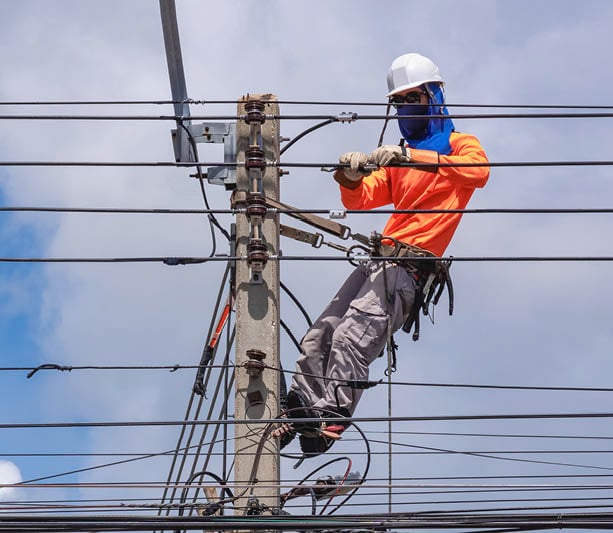-
Business Risk Services
Our Business Risk Services team deliver practical and pragmatic solutions that support clients in growing and protecting the inherent value of their businesses.
-
Consulting
Tailored consulting solutions that deliver measurable results through digital, regulatory and strategic transformation.
-
Corporate Finance and Deal Advisory
We offer a dedicated team of experienced individuals with a focus on successfully executing transactions for corporates and financial institutions. We offer an integrated approach, with our corporate finance specialists working seamlessly with tax and other specialists to ensure that every angle is covered.
-
Forensic Accounting
We have a different way of doing business by delivering real insight through a combination of technical rigour, commercial experience and intuitive judgment. We take pride in delivering responsive and tailored solutions to all our clients, capitalising on the wealth of experience housed within our Belfast and wider Forensics team
-
Restructuring
We work with a wide variety of clients and stakeholders such as high street banks, private equity funds, directors, government agencies and creditors to implement solutions which provide the best possible outcomes.

-
 Article FRS 102 Periodic Review series: Small companiesExplore key changes to small company disclosures under FRS 102 Section 1A, including UK GAAP updates on leases, tax, going concern and related parties.
Article FRS 102 Periodic Review series: Small companiesExplore key changes to small company disclosures under FRS 102 Section 1A, including UK GAAP updates on leases, tax, going concern and related parties. -
 Audit and Assurance FRS 102 Periodic Review series: Other changesOn 27 March 2024, the Financial Reporting Council issued amendments to FRS 100 – 105 (known as GAAP, or Generally Accepted Accounting Practice), a suite of accounting standards applicable in the UK and Ireland. These are used by an estimated 3.4 million businesses in preparing their financial statements.
Audit and Assurance FRS 102 Periodic Review series: Other changesOn 27 March 2024, the Financial Reporting Council issued amendments to FRS 100 – 105 (known as GAAP, or Generally Accepted Accounting Practice), a suite of accounting standards applicable in the UK and Ireland. These are used by an estimated 3.4 million businesses in preparing their financial statements. -
 Audit and Assurance ID Verification: Economic Crime & Corporate Transparency Act 2023Companies House is introducing mandatory identity verification requirements for Directors and People with Significant Control (PSCs), as the next step towards full implementation of the Economic Crime and Corporate Transparency Act 2023.
Audit and Assurance ID Verification: Economic Crime & Corporate Transparency Act 2023Companies House is introducing mandatory identity verification requirements for Directors and People with Significant Control (PSCs), as the next step towards full implementation of the Economic Crime and Corporate Transparency Act 2023. -
 Audit and Assurance FRS 102 Periodic Review series: Accounting for leasesOn 27 March 2024, the Financial Reporting Council issued amendments to FRS 100 – 105 (known as GAAP, or Generally Accepted Accounting Practice), a suite of accounting standards applicable in the UK and Ireland. These are used by an estimated 3.4 million businesses in preparing their financial statements.
Audit and Assurance FRS 102 Periodic Review series: Accounting for leasesOn 27 March 2024, the Financial Reporting Council issued amendments to FRS 100 – 105 (known as GAAP, or Generally Accepted Accounting Practice), a suite of accounting standards applicable in the UK and Ireland. These are used by an estimated 3.4 million businesses in preparing their financial statements.
-
Corporate and International Tax
Northern Ireland businesses face further challenges as they operate in the only part of the UK that has a land border with a country offering a lower tax rate.
-
Employer Solutions
Our team specialises in remuneration and incentive planning and works closely with employers, shareholders and employees to ensure that business strategies are aligned and goals achieved in the most tax efficient, cost-effective manner.
-
Entrepreneur and Private Client Taxes
Our team of experienced advisors are on hand to guide you through any decision or transaction ranging from the establishment of new business ventures, to realising value on exit, to succession planning and providing for loved ones.
-
Global Mobility Services
Grant Thornton Ireland offer a different approach to managing global mobility. We have brought together specialists from our tax, global payroll, people and change and financial accounting teams across Ireland and Northern Ireland, while drawing on the knowledge and insights of our global network of over 143 offices of mobility professionals to provide you with a holistic approach to managing global mobility.
-
Outsourced Payroll
Our outsourced service provides valued service to over 150 separate PAYE schemes. These ranging from 1 to 1000 employees, working for micro, SME and global employers. The service is supported by the integrated network of tax and global mobility teams and the wider Grant Thornton network delivering a seamless service. Experienced staff deliver a personal service built around your business needs.
-
Tax Disputes and Investigations
Our Tax Disputes and Investigation team is made up of tax experts and former HMRC investigators who have years of experience in dealing with a variety of tax investigations. Our expertise and insight can guide you through all interactions, keeping your cost at a minimum while allowing you to continue with the day to day running of your business.
-
VAT and Indirect Taxes
At Grant Thornton (NI) LLP, our team helps Northern Ireland businesses manage their UK and global indirect tax risks which, as transactional taxes, can quickly become big liabilities.


Update your subscriptions for Grant Thornton publications and events.
If asked, most organisations will assert that they listen to their employees. They may even point you towards a suggestions box, or an annual employee survey that they use. However, what do we really mean by ‘listening’?
In my view, the purpose of listening should be two fold; firstly, to show respect for the other party and that you value their input and insights, and secondly, to learn.
Fundamentally, we do not develop new skills or improve unless we learn, and that involves not only making mistakes, but also listening, and learning from others. Practising ‘Active Listening’ is a great place to start if you want to improve your organisation
It can be easy for leaders to overlook the knowledge and insight that has accumulated amongst their workforce with busy schedules and the pressures of today’s working environment, but these people are the ones who are actually doing the work and interacting with your suppliers or customers. They may have insights about how better to serve those customers, to improve your own processes, or to improve the working environment in general. Learning to understand is of the upmost importance, not only to make life better for your employees, but also to improve your organisation and deliver future success.
Active listening is also a very powerful tool when resolving interpersonal or inter-organisational conflicts. This can be incredibly valuable not just to organisations, but to relationships and individuals in almost any setting. It is beneficial not only to your organisation but also to the individuals within it, because being listened to and having your opinions valued is positively correlated with improved levels of self-esteem and wellbeing.
A key part of active listening is making sure the other person knows that you are doing so (we can all tell when we are speaking with someone who is just waiting for their turn to speak). Even when people do make the time to have a conversation, visual cues like eye contact, facial expressions, and body language can often reveal that they are not really listening. So, when engaged in active listening you should make a conscious effort to be truly engaged and to eliminate distractions, particularly when using virtual platforms such as Teams or Zoom - and just not just reading your emails. Can you really be actively listening with your camera turned off?
Being an active listener is not something most of us can just do without thinking about it. We all have busy lives and busy jobs with lots of things going through our minds at any given moment. It is a skill, and for most of us, it will take practice. A good place to start is during your next conversation, try not to focus on what your response is going to be but rather think about; what is this person trying to tell me? Why do they want me to know this? And how do they appear to feel about this? This skill will develop over time, as you become a more natural active listener, and you should begin to gain more insights from your conversations. Being a good active listener comes at no cost, and it may just give you that competitive edge, both as an individual and for the organisation.




